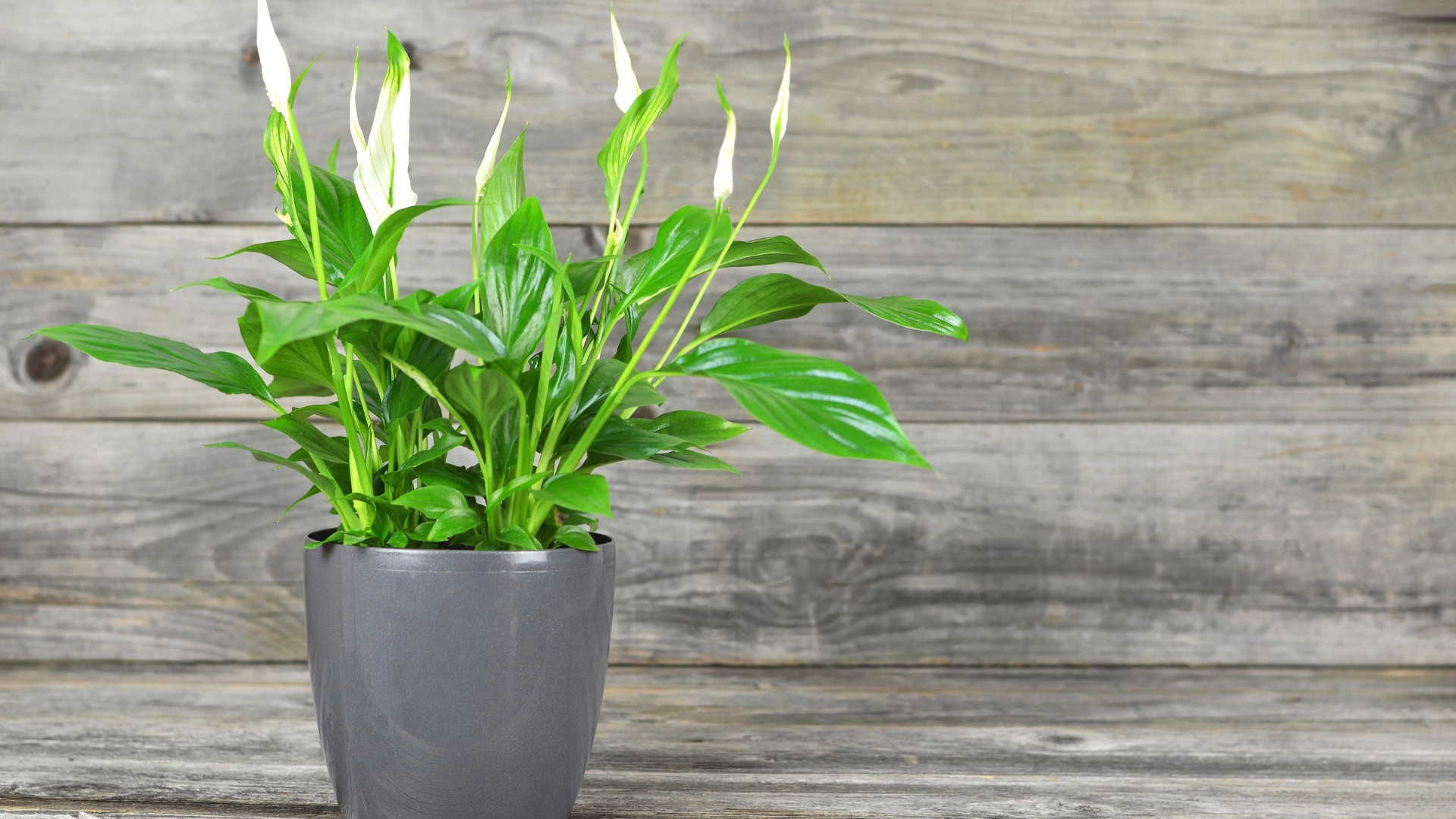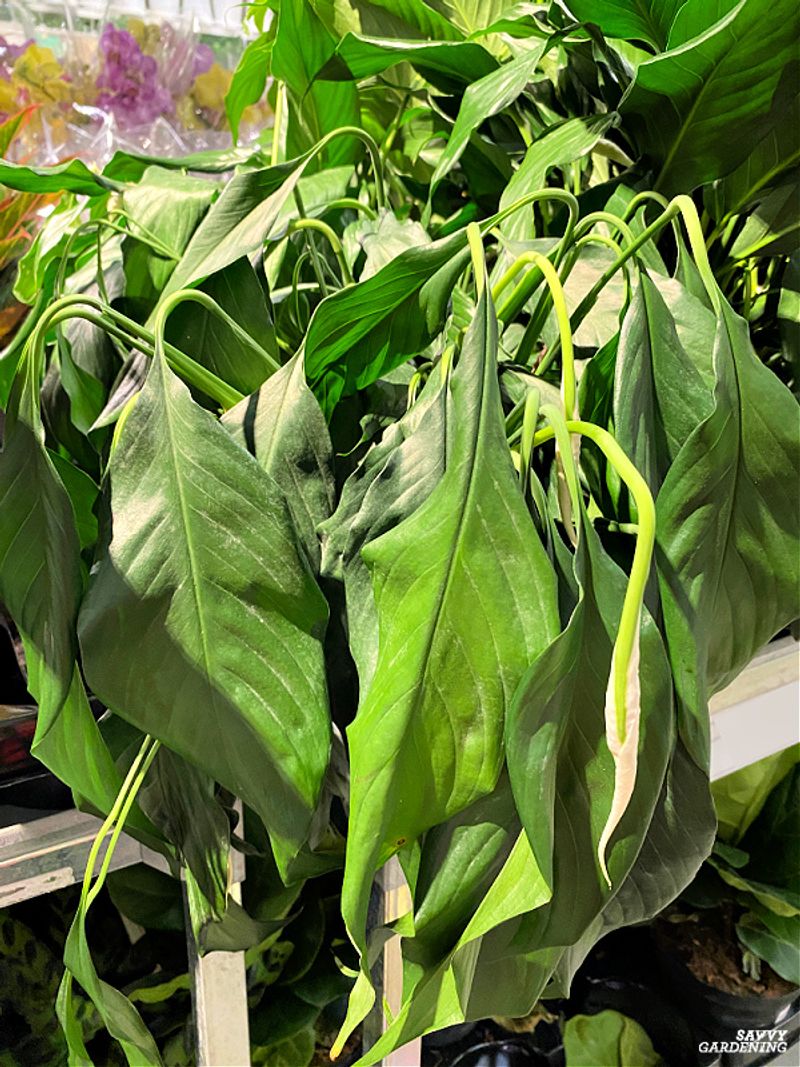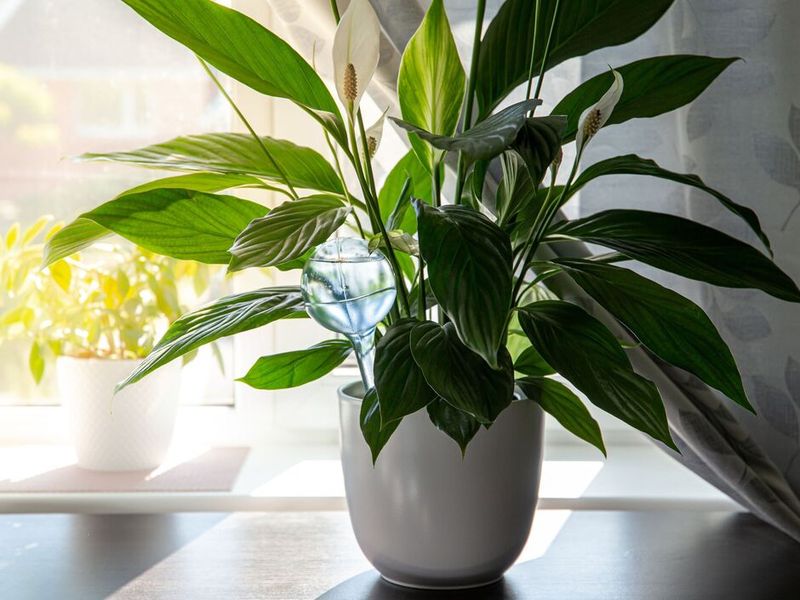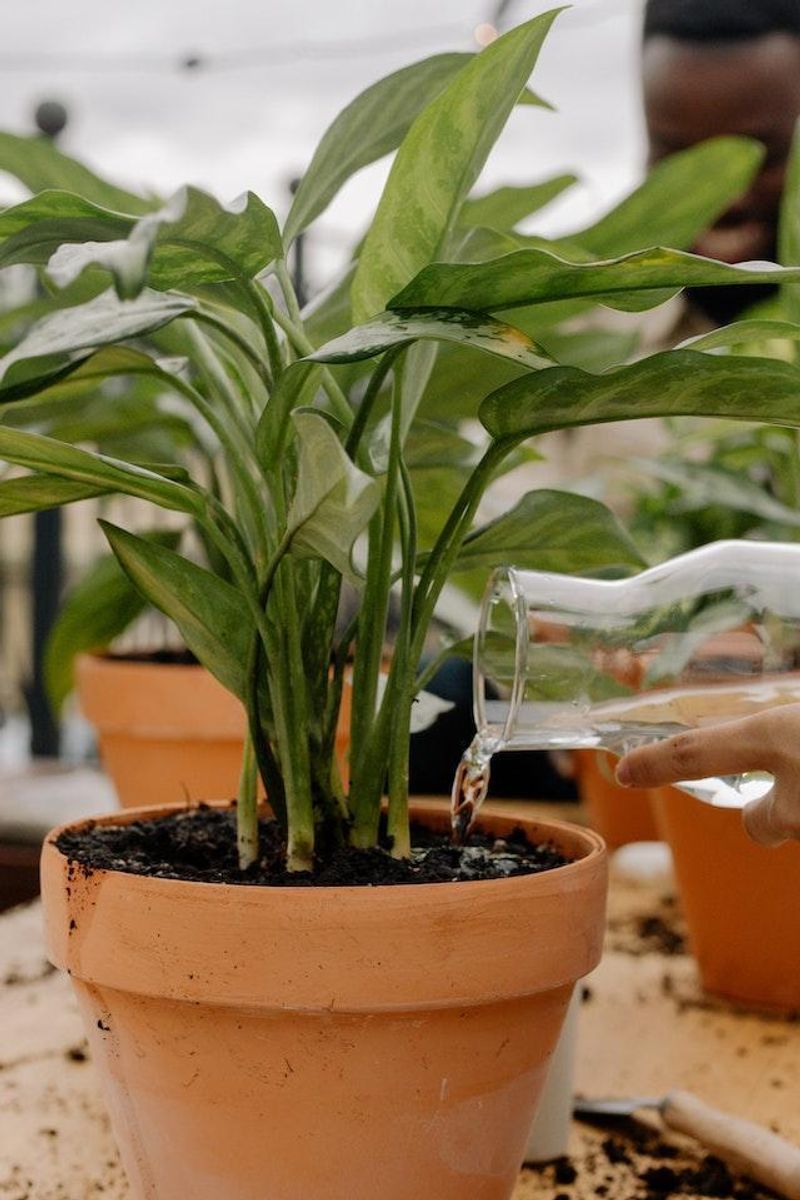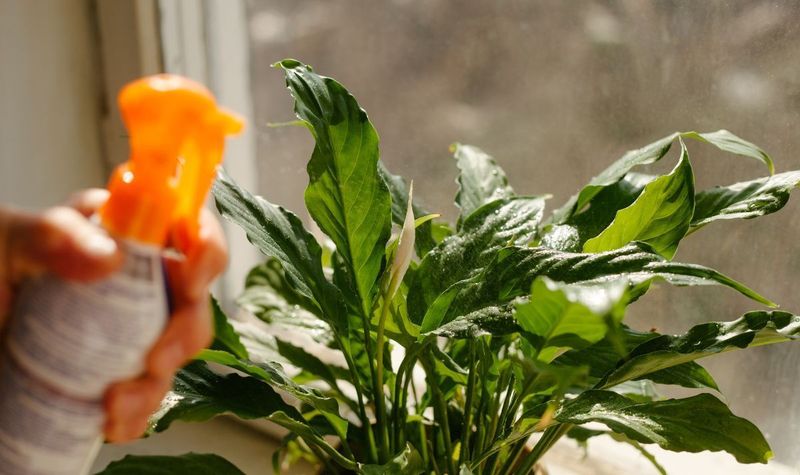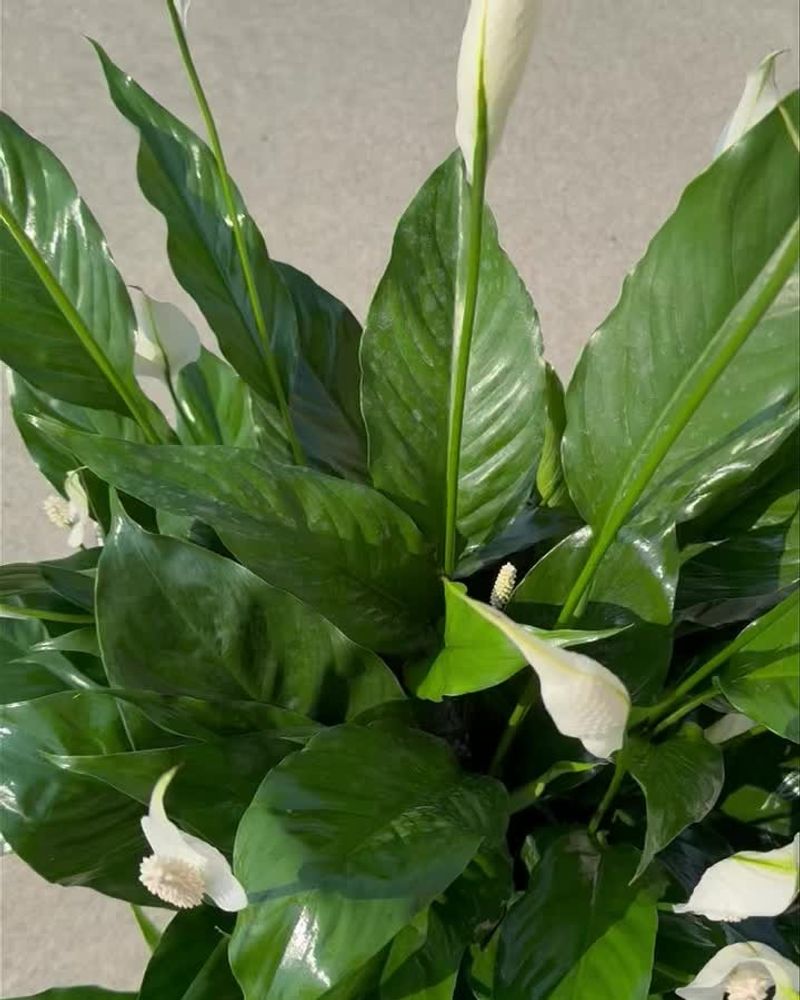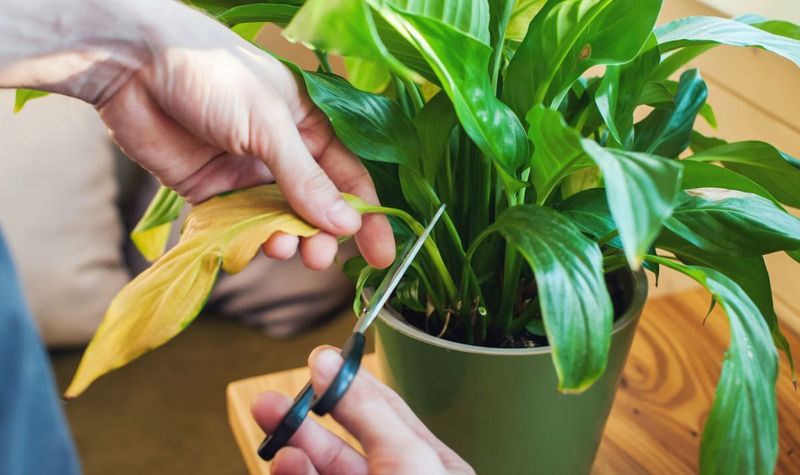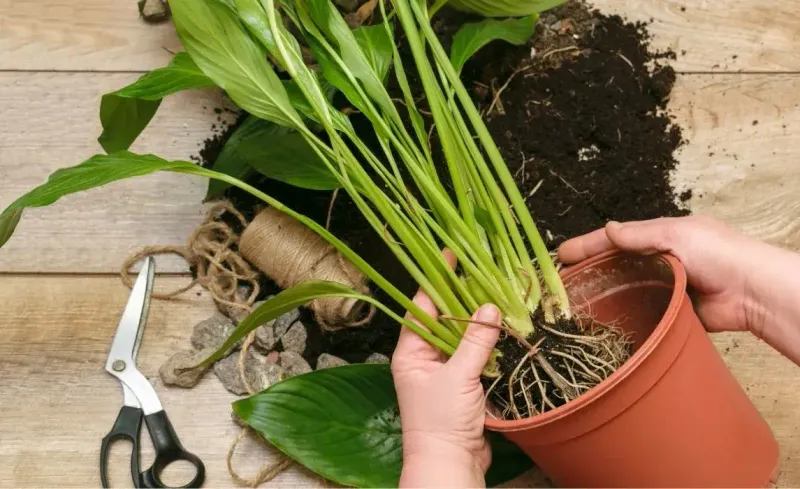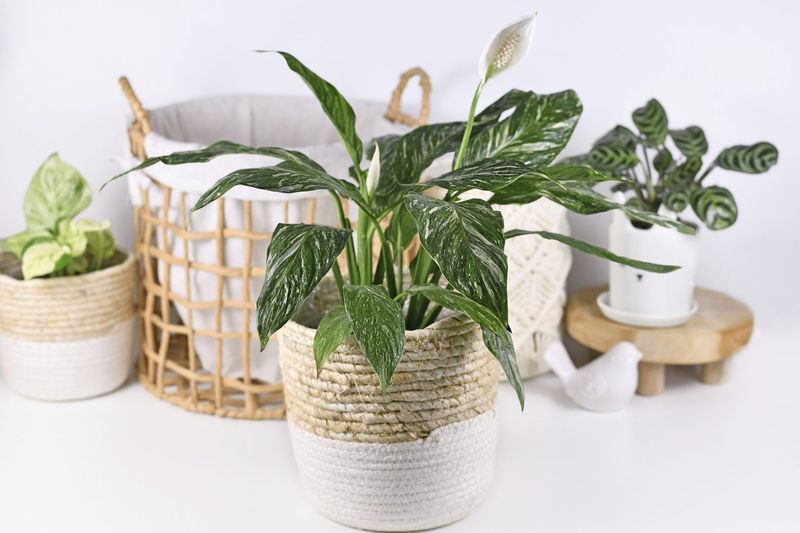Is your peace lily looking sad and droopy instead of standing tall and proud? Don’t worry – this common houseplant problem has quick solutions! Peace lilies droop for several simple reasons, and with just a few minutes of care, you can bring your plant back to its perky, beautiful self.
1. Check the Soil Moisture First
The number one reason peace lilies droop is improper watering. Stick your finger about an inch into the soil to feel if it’s dry. Most drooping comes from underwatering, not overwatering!
If the soil feels completely dry, your plant is thirsty. Peace lilies are dramatic plants that quickly show when they need a drink by drooping their leaves dramatically.
This quick check takes just seconds but helps you identify the most common problem right away.
2. Give a Thorough Bottom Soak
For severely dehydrated peace lilies, bottom watering works wonders. Place your pot in a basin of room temperature water for 15 minutes. The soil will absorb moisture through drainage holes, hydrating the roots thoroughly.
Remove the pot once the top soil feels damp but not soggy. This method prevents water from simply running through without properly saturating the root ball.
Your plant will begin perking up within minutes after a good soak.
3. Drain Excess Water Immediately
Overwatering can also cause drooping! If your soil feels soggy and your plant is in a decorative pot without drainage, remove it immediately. Gently tip the pot to pour out standing water that’s drowning the roots.
Move your peace lily to a sink and allow excess water to drain completely. Roots need oxygen, and waterlogged soil prevents them from breathing properly.
Make sure your pot has proper drainage holes to prevent future problems.
4. Mist the Leaves for Quick Revival
Peace lilies love humidity! Fill a spray bottle with room temperature water and mist the leaves generously. This creates immediate humidity around the plant and cleans dust from the leaves.
Misting helps revive droopy leaves within minutes by providing moisture directly to the foliage. Unlike some houseplants, peace lilies absorb water through their leaves as well as roots.
Focus on both the tops and undersides of leaves where tiny pores take in moisture.
5. Relocate Away From Drafts
Cold drafts make peace lilies sulk! Check if your plant sits near an air conditioner, open window, or heating vent. Even brief exposure to cold air can cause dramatic drooping in these tropical plants.
Move your peace lily to a draft-free location with consistent temperatures between 65-85°F. Sudden temperature changes stress these sensitive plants, causing them to drop their leaves defensively.
You’ll see improvement within minutes once your plant is in a stable environment.
6. Wipe Dust From Leaves
Dusty leaves can’t breathe properly! Grab a soft, damp cloth and gently wipe each leaf from base to tip. Dust blocks light absorption and clogs the leaf pores that plants use for respiration.
Support each leaf with one hand while wiping with the other to prevent tearing. Clean leaves photosynthesize more efficiently, helping your plant recover faster from stress.
A monthly leaf-cleaning routine keeps your peace lily healthy and its distinctive glossy leaves looking beautiful.
7. Adjust Lighting Conditions
Peace lilies droop when they get too much direct sunlight or too little light overall. These plants naturally grow under forest canopies with bright, filtered light.
Move your plant to a spot with indirect light – near a north or east-facing window is perfect. If leaves show yellow patches, they’re getting sunburned and need less light.
Proper lighting makes a dramatic difference in leaf position, and your plant will respond positively within hours of being properly placed.
8. Remove Damaged Leaves
Brown, yellow, or severely drooping leaves won’t recover and drain energy from your plant. Use clean scissors to snip these damaged leaves at the base where they meet the main stem.
Removing unhealthy growth allows the plant to focus resources on new leaves. Cut at an angle to prevent water from collecting on the cut surface and causing rot.
Your peace lily will look instantly better and healthier once these energy-draining damaged parts are removed.
9. Check for Root Issues
If your peace lily remains droopy after watering, gently remove it from its pot. Healthy roots should be firm and white or light tan, not dark brown, mushy, or smelly.
Trim any rotted roots with clean scissors and repot in fresh soil. Root problems prevent water uptake even when soil is moist, causing persistent drooping despite proper care.
A quick root check can reveal hidden problems that simple watering won’t fix.
10. Add Humidity Tray for Long-Term Health
For lasting perkiness, create a humidity tray. Fill a shallow dish with pebbles, add water just below the stone tops, and place your plant’s pot on top. This creates a microclimate of humidity around your peace lily.
Unlike misting, which provides temporary relief, a pebble tray offers consistent moisture. The evaporating water surrounds your plant with the humid air it naturally craves.
Your peace lily will stand tall with this simple addition to its care routine.

